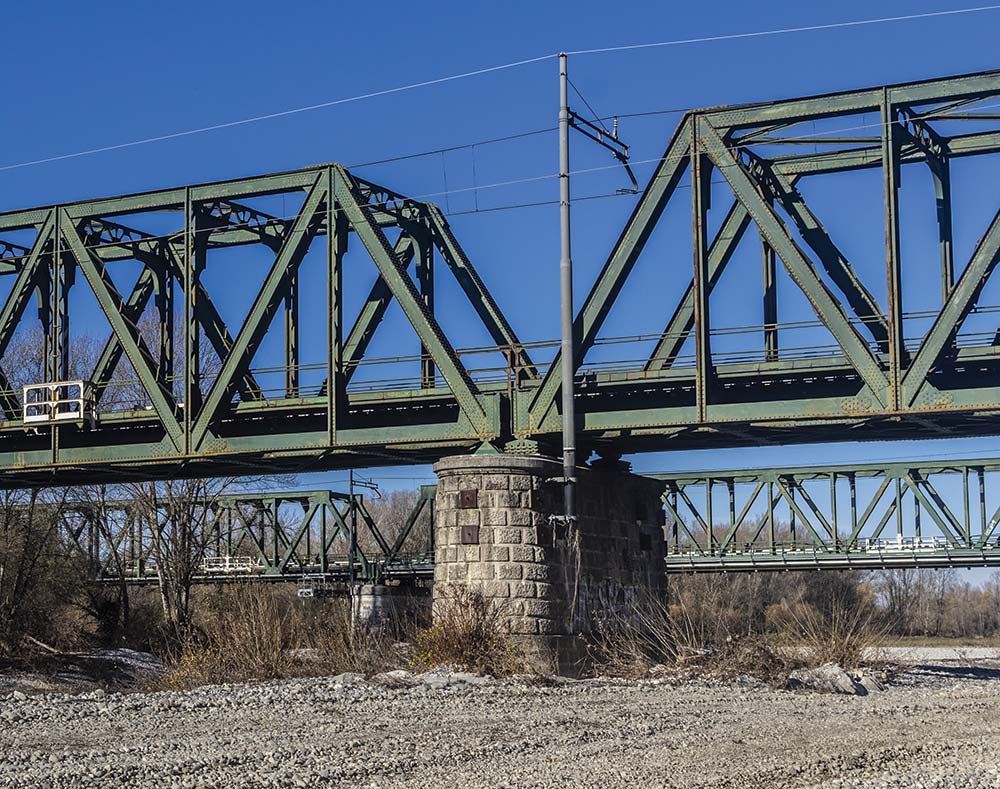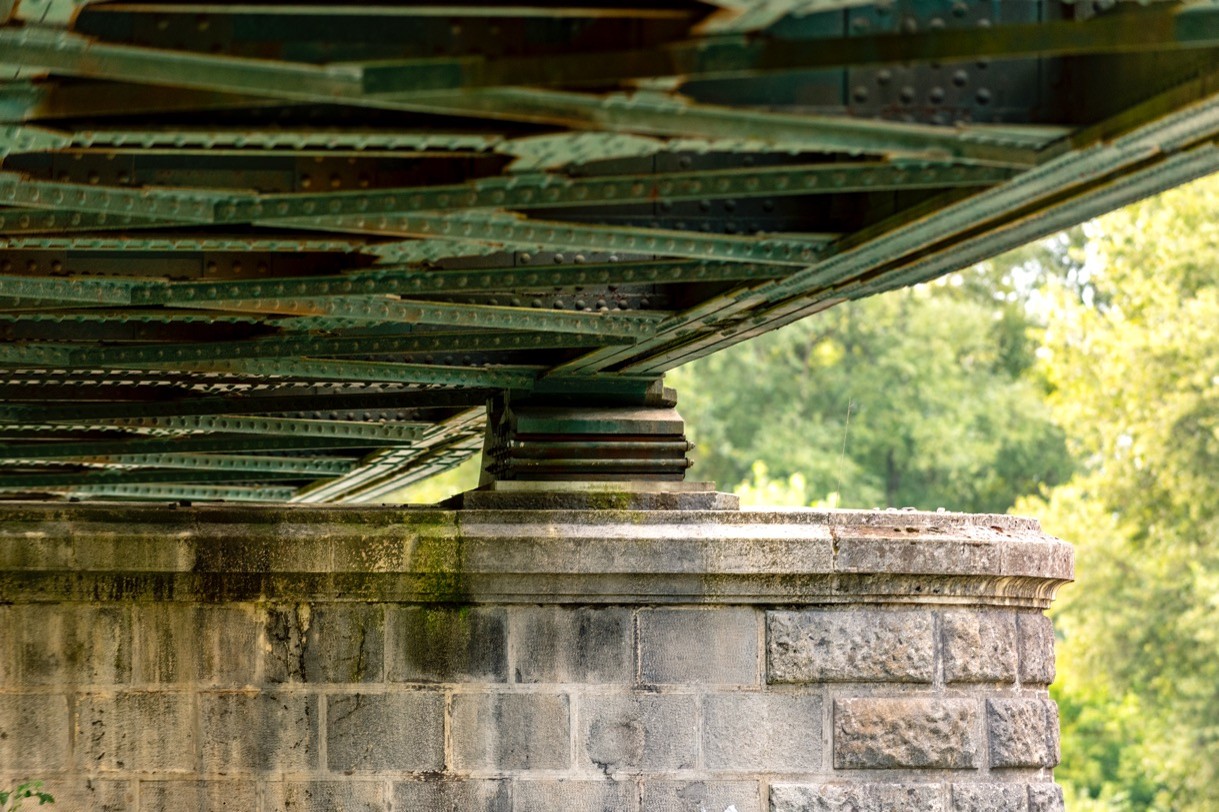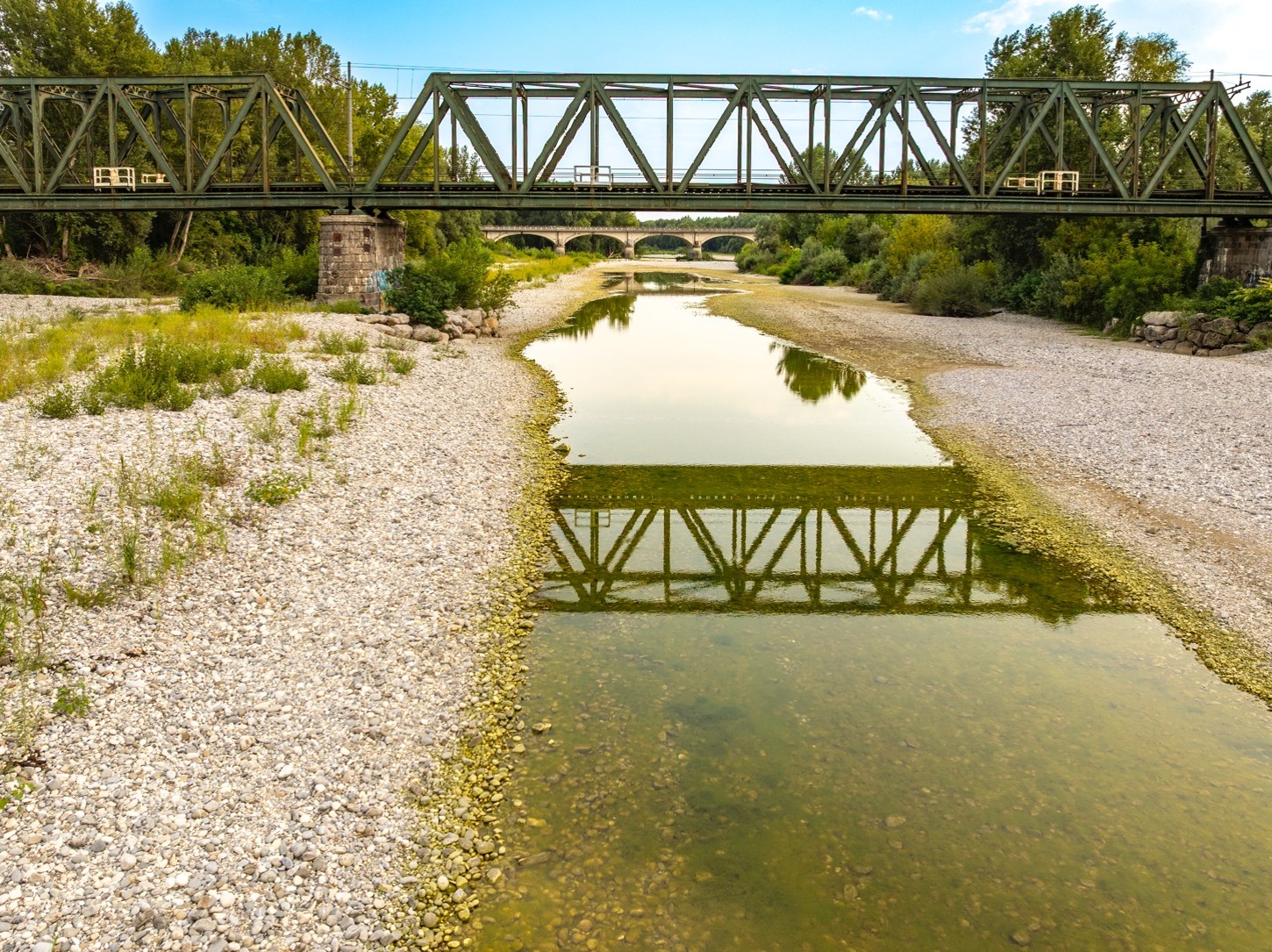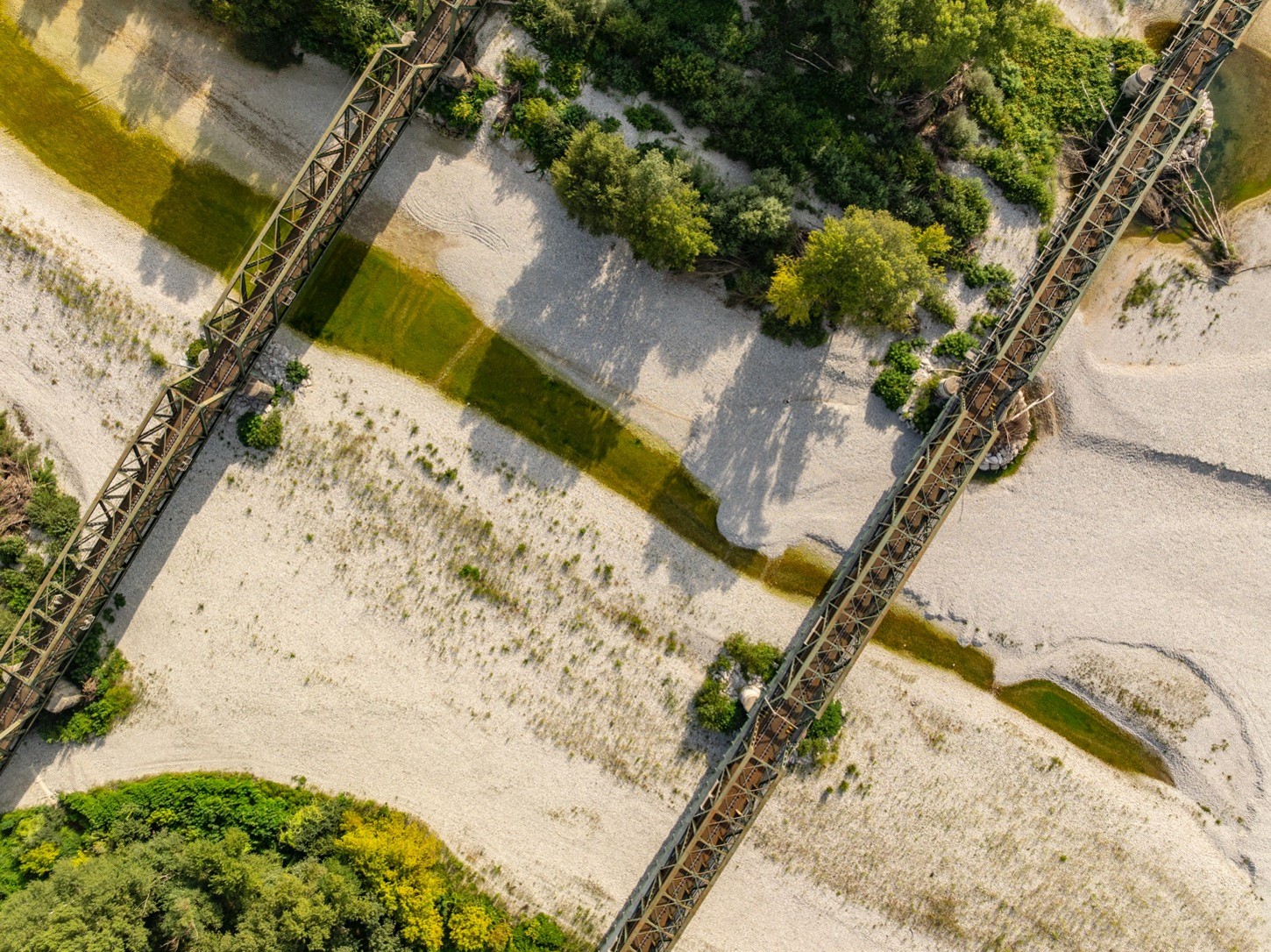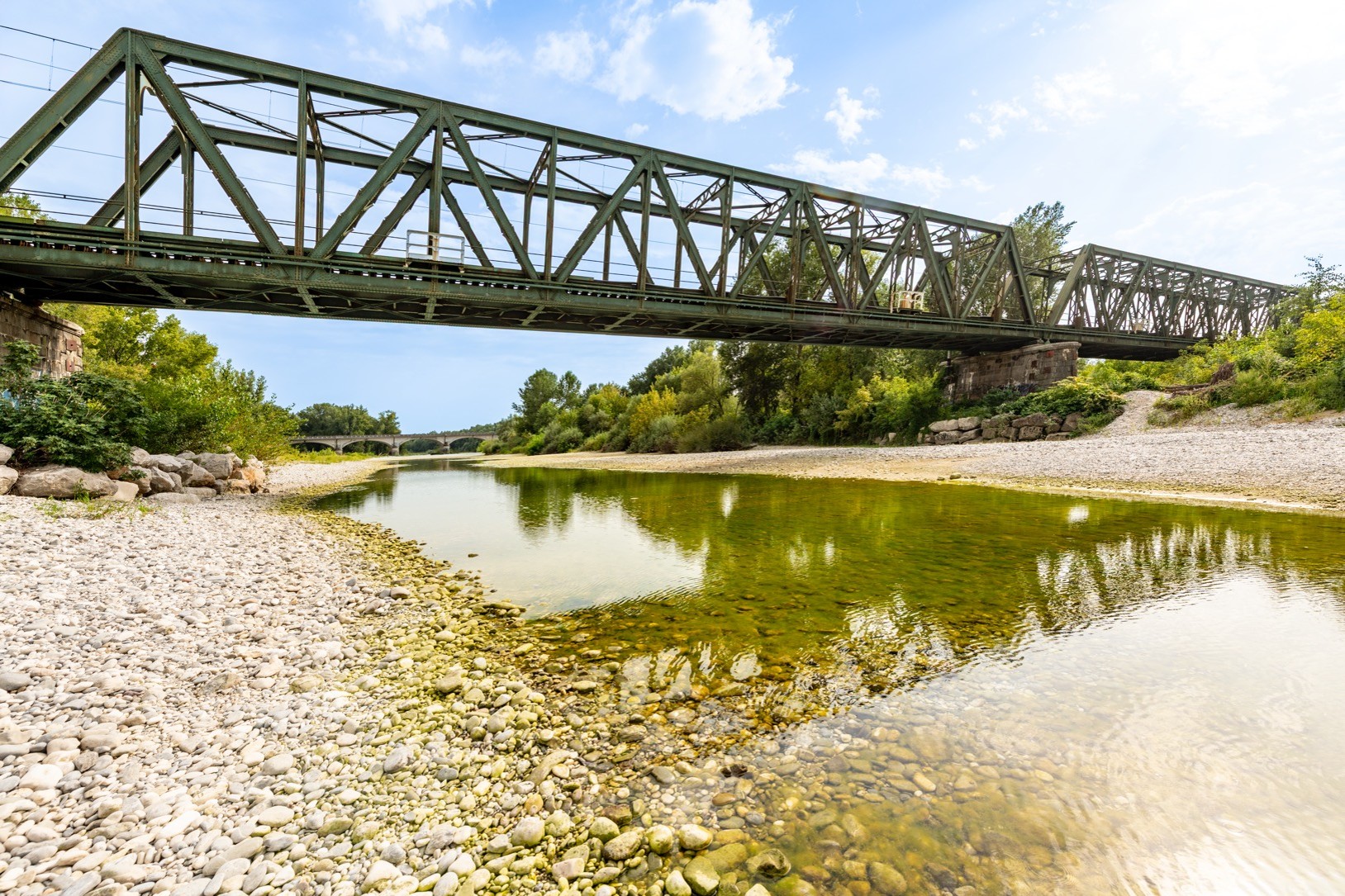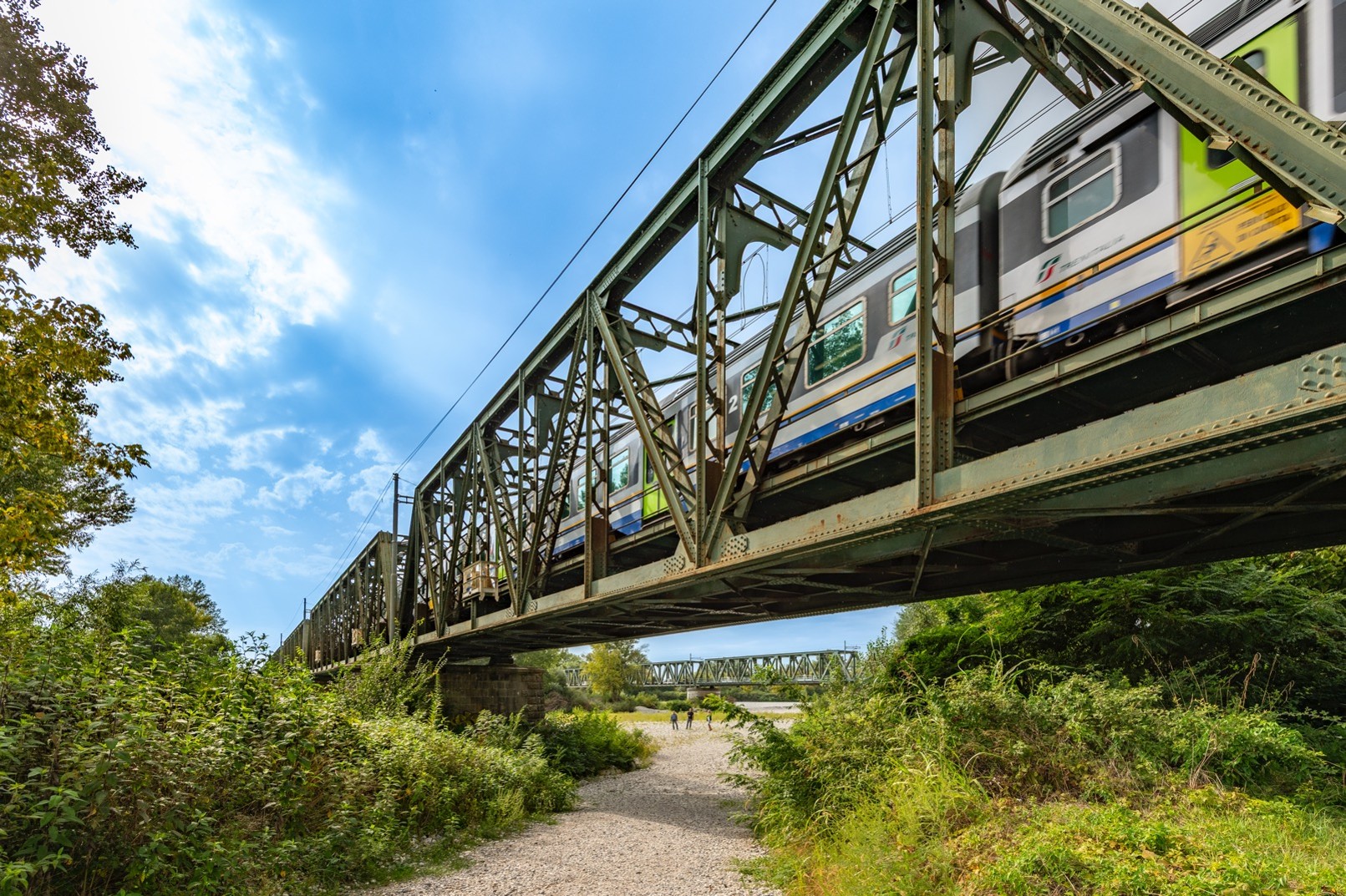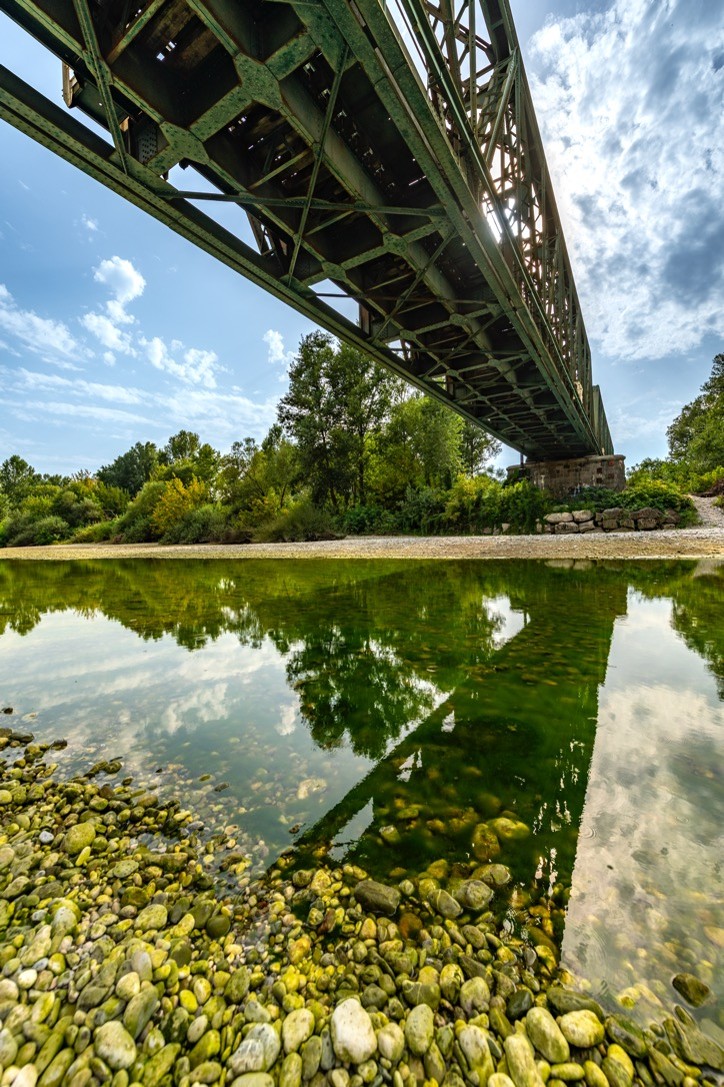pieris
Pieris Railway Bridge
Edoardo TAZZARI
Giacomo MILANO
Giacomo MILANO
HISTORY
Between the mid-1800s and the end of the 19th century, railway routes in the Princely County of Gorizia—including those connecting Vienna with Trieste—were significantly impacted by the new connection to Venice in the Kingdom of Italy (1866). These changes affected both the territory and its inhabitants. Historical information about the Pieris Railway Bridge remains scarce, though what survives is fascinating. In its inaugural article of 12 June 1894, the local newspaper Il Corriere di Gorizia declared it “a colossal work, the most important structure of the railway line”. It noted its cost at “750,000 florins”. The engineering documentation available reveals the considerable technical challenges encountered during construction. Project engineers Giulio Dreossi and Giacomo Antonelli reported that initial progress was impeded by drought conditions, followed by adverse weather and flooding. Despite these obstacles, the Pieris Bridge—which carries the new railway line—remains the only major iron structure built as part of this railway infrastructure.

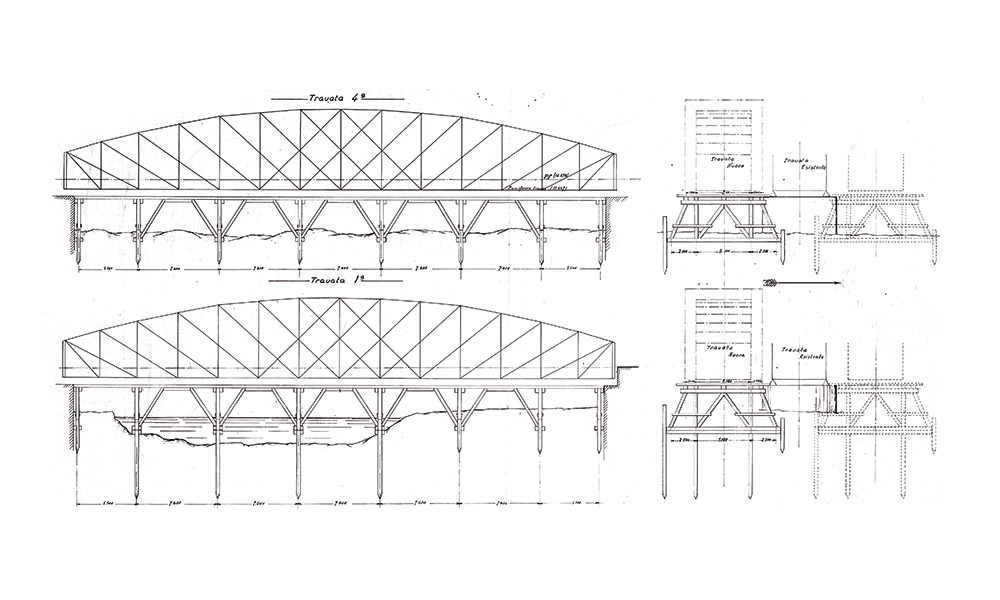
BRIDGE CONSTRUCTION AND STRUCTURAL ENGINEERING
The bridge consists of two parallel and structurally independent structures, comprising seven spans measuring 52.50 metres in total length. Each span features a combination of straight lower chords and parabolic upper chords, which results in varying structural heights. The truss system employs vertical members consisting of posts and diagonal supports. Horizontal bracing and cross-beams integrate the structure, providing support for the stringers—substantial longitudinal beams that accommodate the railway tracks.The bridge’s abutments and piers are built from limestone blocks. The piers have a unique cross-section design—semicircular on the downstream side and pointed-arch shaped on the upstream side—specifically engineered to deflect the Isonzo River’s flow. The structure is anchored by substantial concrete foundation blocks.
The bridge sustained significant structural damage during wartime bombardment, with partial impairment of the downstream track and total destruction of the upstream track. In the post-World War II period, the restoration of the Venice-Trieste double-track line emerged as a priority. Following technical assessment, the engineering team decided to repair the surviving downstream track while fully reconstructing the destroyed upstream section.
BRIDGE CONSTRUCTION AND STRUCTURAL ENGINEERING
The bridge consists of two parallel and structurally independent structures, comprising seven spans measuring 52.50 metres in total length. Each span features a combination of straight lower chords and parabolic upper chords, which results in varying structural heights. The truss system employs vertical members consisting of posts and diagonal supports. Horizontal bracing and cross-beams integrate the structure, providing support for the stringers—substantial longitudinal beams that accommodate the railway tracks.The bridge’s abutments and piers are built from limestone blocks. The piers have a unique cross-section design—semicircular on the downstream side and pointed-arch shaped on the upstream side—specifically engineered to deflect the Isonzo River’s flow. The structure is anchored by substantial concrete foundation blocks.
The bridge sustained significant structural damage during wartime bombardment, with partial impairment of the downstream track and total destruction of the upstream track. In the post-World War II period, the restoration of the Venice-Trieste double-track line emerged as a priority. Following technical assessment, the engineering team decided to repair the surviving downstream track while fully reconstructing the destroyed upstream section.

CURRENT STATE AND FUTURE DEVELOPMENTS
The maintenance of the bridge over the Isonzo River follows a comprehensive inspection program established by Rete Ferrovia Italiana (RFI). The maintenance strategy encompasses standard periodic assessments as well as special and extraordinary interventions to maintain optimal structural integrity and operational efficiency. The inspection protocol mandates annual inspections along with more detailed technical assessments every three and six years. Qualified engineering teams conduct these inspections, often utilising state-of-the-art technology such as Unmanned Aerial Systems (UAS)—or drones—to create three-dimensional models of the bridge.The bridge is integral to the Venice-Trieste railway upgrade initiative, connecting northeastern Italy and facilitating rail traffic along the Mediterranean and Baltic-Adriatic European corridors. RFI’s modernisation program aims to enhance the line’s reliability and performance—reducing travel times and increasing capacity for both passenger and freight services. These systematic improvements will enhance schedule adherence while upholding rigorous safety standards. Additionally, the project prioritises preserving the bridge’s architectural heritage and its significant contribution to the regional landscape.
